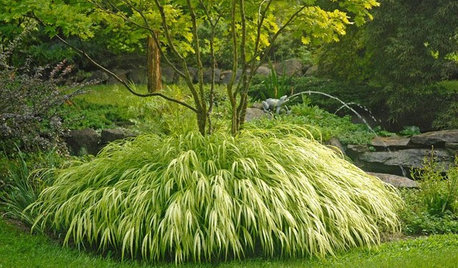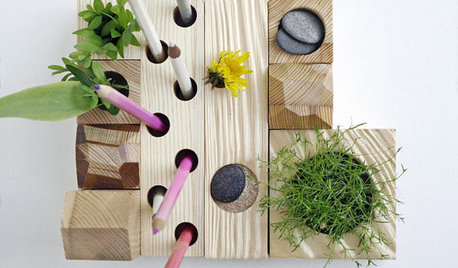Organic perennial production
vouts
19 years ago
Related Stories

PLANTING IDEASWant a More Colorful, Natural Garden? Try a Perennial Meadow
Spend less time tending and more time taking in the sights by improving on Victorian and prairie garden designs
Full Story
GARDENING GUIDESTop 12 Summer-Blooming Perennials for Deer-Resistant Drama
Can you have garden color, fragrance and exciting foliage with hungry deer afoot? These beauties say yes
Full Story
PRODUCT PICKSGuest Picks: 20 Gorgeous Perennials to Plant Now
Take advantage of warm spring weather to create a colorful garden with blooming plants, succulents and ornamental grasses
Full Story
GARDENING GUIDES10 Cold- and Heat-Tolerant Perennials and Shrubs for the Arid West
These flowering native plants shrug off the cold of winter and heat of summer while adding beauty to the drought-tolerant landscape
Full Story
HOME OFFICESGuest Picks: 20 Products to Organize Your Home Office in Style
An organized office doesn't have to be a boring one. Brighten it up with these eclectic desk accessories
Full Story
SHOP HOUZZHouzz Products: Organize That Closet, Finally!
Tame the chaos and create a covetable closet for her, him and the kids with tips from our organizing expert
Full Story
SHOP HOUZZHouzz Products: Make Over Your Mudroom
With a tip-top, organized mudroom, your shuffle in and out of the house will be speedier and go more smoothly
Full Story
KITCHEN DESIGNGuest Picks: Get That Kitchen Organized!
20 products to make your kitchen work harder for you
Full Story
KITCHEN DESIGNThe Hanging Magic of Kitchen Wall Rail Organization
Inspiration and Products to Help Clean Up Countertop Clutter
Full Story
CRAFTS20 Ways to Organize Your Craft Space
Tired of looking for a needle in a haystack? Giving tools and supplies a proper place steps up productivity and cuts down on frustration
Full Story





ninamarie
voutsOriginal Author
Related Professionals
Wrentham Landscape Architects & Landscape Designers · Sahuarita Landscape Architects & Landscape Designers · Anderson Landscape Contractors · Concord Landscape Contractors · Tempe Landscape Contractors · Broomfield Landscape Contractors · Cincinnati Landscape Contractors · Galt Landscape Contractors · Hilton Head Island Landscape Contractors · Middletown Landscape Contractors · Mount Kisco Landscape Contractors · North Haven Landscape Contractors · Sugar Hill Landscape Contractors · Escondido Driveway Installation & Maintenance · Lakewood Driveway Installation & Maintenanceginger_nh
ninamarie
JAYK
ginger_nh
Hap_E
voutsOriginal Author
Organic_johnny